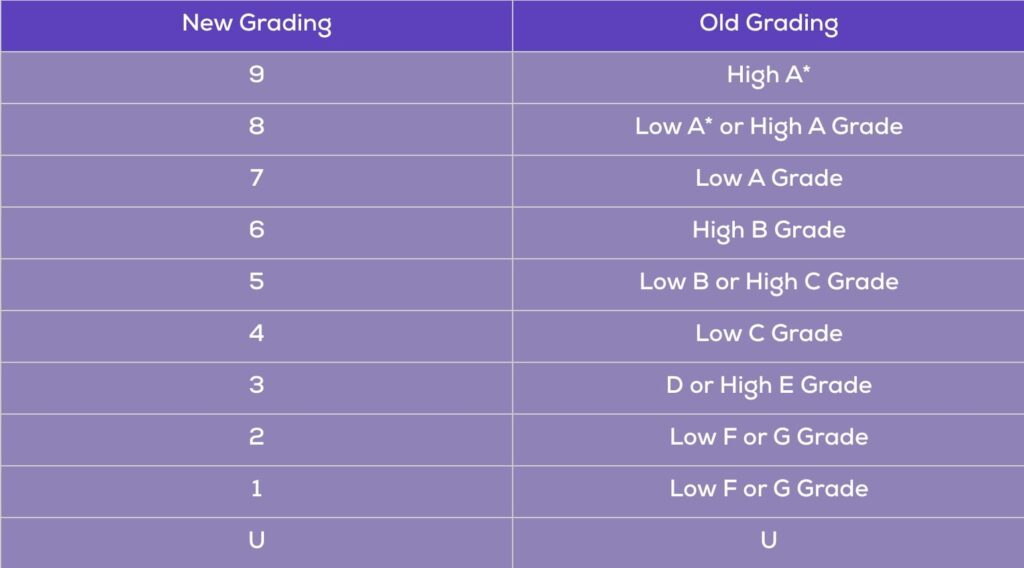Table of Contents:
- What Does a GCSE Strong Pass Mean?
- What Constitutes a GCSE Standard Pass?
- GCSE Grade Boundaries Throughout the Years
- The New GCSE Grading System
- How GCSE Grade Boundaries Work
- Who Sets GCSE Grade Boundaries?
- What Data Do Senior Examiners Use to Determine Grade Boundaries?
- When are GCSE Grade Boundaries Published?
- Why is it Important to Understand GCSE Grade Boundaries?
GCSE grades are a vital component of the UK education system. They can determine a student’s future educational and career prospects, so it’s essential to understand what they are and where grade boundaries come from.
The introduction of the new 9-1 grading system for GCSEs has added an extra layer of complexity, consequently leaving many students and parents feeling uncertain about what grades to expect and their implications.
In this article, we will provide a comprehensive guide to GCSE grades and grade boundaries. Specifically, we will explain what they are, how they function, and how you can interpret your results effectively. We will also cover some additional considerations, such as how grading varies between subjects and exam boards, and what the impact of the COVID-19 pandemic has been on GCSE grades.
What Does a GCSE Strong Pass Mean?
A strong pass in the GCSE is classified as achieving a grade 5. Consequently, this level of performance positions itself midway between a B and a C in the traditional grading system.
What Constitutes a GCSE Standard Pass?
A standard pass at GCSE is denoted by a grade 4. This grade aligns directly with a C grade under the former numerical grading system. It’s important to note that a majority of university programmes stipulate a minimum requirement of a C grade, or its equivalent.
GCSE Grade Boundaries Throughout the Years
The New GCSE Grading System
In 2017, the GCSE grading system in England began to change from the traditional A*-G to a numerical system of 9-1 GCSE Levels.
We implemented this change to align English standards with those of other high-performing countries and to reflect the new, more demanding content of the courses, as well as their linear assessment.

GCSE Grades explained
- In the current grading system grades 7-9 are equivalent to the old grades A and A*.
- The bottom of grade 7 aligns with the bottom of grade A.
- Grades 4-6 are equivalent to the old grades B and C.
- The bottom of grade 4 aligns with the bottom of grade C
- The system has been designed so that the bottom of grade 1 aligns with the bottom of grade G.
The new grading system allows for more differentiation among the higher grades, with a grade 9 being higher than an A*. Roughly the top 20% of students who achieve a grade 7 or above will achieve a grade 9. Grade 5 is considered a ‘good pass’, while grade 4 is a ‘standard pass’.
How GCSE Grade Boundaries Work
GCSE grade boundaries represent the minimum marks required to attain a specific grade in a subject. Typically, exam boards set these boundaries after each exam series, and importantly, they base them on the performance of the students who participated in the exams.
The grade boundaries are not fixed, and they can vary from one exam series to another, depending on the difficulty of the exam and the performance of the students. In general, the grade boundaries are higher for more difficult exams and lower for easier exams.
It’s worth noting that the grade boundaries are not arbitrary; instead, they are grounded in statistical data from the exam results. Furthermore, the exam boards employ statistical methods to determine these boundaries, ensuring that grades are awarded both fairly and accurately.
Who Sets GCSE Grade Boundaries?
Each year, the GCSE grade boundaries are set by senior examiners and vary slightly for each subject to ensure the system is fair for students. The new grading system is intended to give sixth forms, colleges, universities, and employers a better idea of a student’s level of achievement and allows for micro-distinguishing between the various grades, such as 7, 8, and 9.
Let’s take the GCSE maths grade boundaries of the Pearson Edexcel exam board.

What Data Do Senior Examiners Use to Determine Grade Boundaries?
In addition to the general principles of how GCSE grade boundaries work, there are some other factors that may affect the grade boundaries for a particular subject or exam series. These include:
Difficulty of the exam
If an exam is considered to be more difficult than previous years, the grade boundaries may be lowered to ensure that students are not unfairly penalized for a more challenging test.
Scaling and moderation
To ensure that grades are consistent across different exam boards and subjects, a process of scaling and moderation is used. This involves adjusting the raw marks to account for differences in difficulty between different exams or subjects. More detailed explanation about WJEC and Eduqas in our blog post.
Tiered exams
Some GCSEs are offered as tiered exams, where students can choose to take either a foundation or higher tier paper. The grade boundaries for these exams may differ depending on the tier chosen, with higher boundaries for the higher tier and lower boundaries for the foundation tier.
Coursework and controlled assessment
Some GCSEs incorporate coursework or controlled assessments into the final grade. Consequently, the grade boundaries for these components might be established separately from the exam component. Additionally, these boundaries can vary depending on the year and the subject.
When are GCSE Grade Boundaries Published?
The grade boundaries are usually published on the exam board’s website a few days after the results are released. This allows students to see how close they were to achieve a higher grade and provides transparency in the marking process.
Why is it Important to Understand GCSE Grade Boundaries?
Understanding GCSE grade boundaries is crucial for students and teachers to assess performance and determine grades. Consequently, these boundaries, set by exam boards, represent the minimum mark required to achieve a specific grade. For example, if the grade boundary for a grade 7 in a particular GCSE exam is 70 marks, any student who scores 70 marks or above will receive a grade 7.
Grade boundaries can change from year to year. Therefore, it’s essential to review the grade boundaries for the specific exam and exam board that you are taking to ensure a clear understanding of what marks are required to achieve a particular grade. Take a look at our guide about A-level Grades – Grade Boundaries
Conclusion
In conclusion, understanding the GCSE grading system and grade boundaries is crucial for students, parents, and educators. The grading system has undergone significant changes in recent years, with the new numerical scale replacing the traditional letter grades.
It’s essential to understand that grade boundaries can vary between subjects and exam boards, and they can also change each year. Students should aim to perform to the best of their abilities, rather than focusing solely on achieving a specific grade. Teachers and schools play a crucial role in supporting students and offering precise information about grading systems and grade boundaries. Furthermore, by gaining a clear understanding of the grading system and grade boundaries, students can make informed decisions and take proactive steps towards achieving their academic goals.
If you just learned something new, feel free to share this article with your fellow GCSE students so they can benefit too. And if you’re looking for help with grade boundaries or need insider tips from someone who’s already aced their GCSEs, you can schedule a free meeting with expert GCSE tutors.
What do the grades 1 – 9 mean for GCSE?
The revamped (GCSE) General Certificate of Secondary Education assessments will now utilise a grading system that stretches from 9, marking the pinnacle of achievement, down to 1, representing the baseline level. This refreshed grading mechanism is set to correspond with crucial benchmarks within the existing A* to G framework. Essentially, the distribution of students attaining at least a grade 1 will mirror the current pattern of those securing a grade G or higher. The aim is to maintain a consistent measure of performance, while making the grading scale clear for students to understand.
What does GCSE stand for
GCSE stands for General Certificate of Secondary Education. It is a key part of the National Curriculum in the UK.
What are new GCSE grades equivalent to?
In the current grading system grades 7-9 are equivalent to the old grades A and A*. The bottom of grade 7 aligns with the bottom of grade A. Grades 4-6 are equivalent to the old grades B and C. The bottom of grade 4 aligns with the bottom of grade C. The system has been designed so that the bottom of grade 1 aligns with the bottom of grade G.







